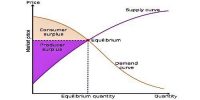Understanding the marketing environment and conducting marketing research can help to identify marketing opportunities. The company must then measure and forecast the size, growth, and profit potential of each new opportunity. Sales forecasts prepared by marketing are used by finance to raise cash for investment and operations; by manufacturing to establish capacity and output; by purchasing to acquire the right amount of supplies; and by human resources to hire the needed workers. In the late nineteenth century, however, conditions started to change. Decision making became more complex and choices had to be made more quickly. If the forecast is off the mark, the company will face excess or inadequate inventory. Since it’s based on estimates of demand, and managers need to define what they mean by tee demand. Although DuPont’s Performance Materials group knows DuPont Tyvek has 70 percent of the $100 million markets for air-barrier membranes, they see greater opportunity with more products and services to tap into the entire $7 billion US home construction market.
The Measures of Market Demand
Companies can prepare as many as 90 different types of demand estimates for six different product levels, five space levels, and three time periods. Each demand measure serves a specific purpose. A company might forecast short-run demand to order raw materials, plan production, and borrow cash. It might forecast demand to decide whether to set up regional distribution. To survive in this ever-changing environment, marketers need information on regular interval regarding the changes as well as to manage them. There are many productive ways to break down the market:
(a) The potential market: a set of consumers with a sufficient level of interest in a market offer.
The potential market is the set of consumers with a sufficient level of interest in a market offer. However, their interest is not enough to define a market unless they also have sufficient income and access to the product.
(b) The available market: a set of consumers who have interest, income, and access to an offer.
Available market is the set of consumers who have interest, income, and access to a particular offer. The company or government may restrict sales to certain groups; a particular state might ban motorcycle sales to anyone under 21 years of age. Eligible adults constitute the qualified available market – the set of consumers who have interest, income, access, and qualifications for the market offer.
(c) The target market: part of the quali³ed available market the company decides to pursue.
Target market is the part of the qualified available market the company decides to pursue. The company might concentrate its marketing and distribution effort on the East Coast.
(d) The penetrated market is the set of consumers who are buying the company’s product.
These definitions are a useful tool for market planning. If the company isn’t satisfied with its current sales, it can try to attract a larger percentage of buyers from its target market. It can lower the qualifications for potential buyers. It can expand its available market by opening distribution elsewhere or lowering its price or it can reposition itself in the minds of its customers.
















